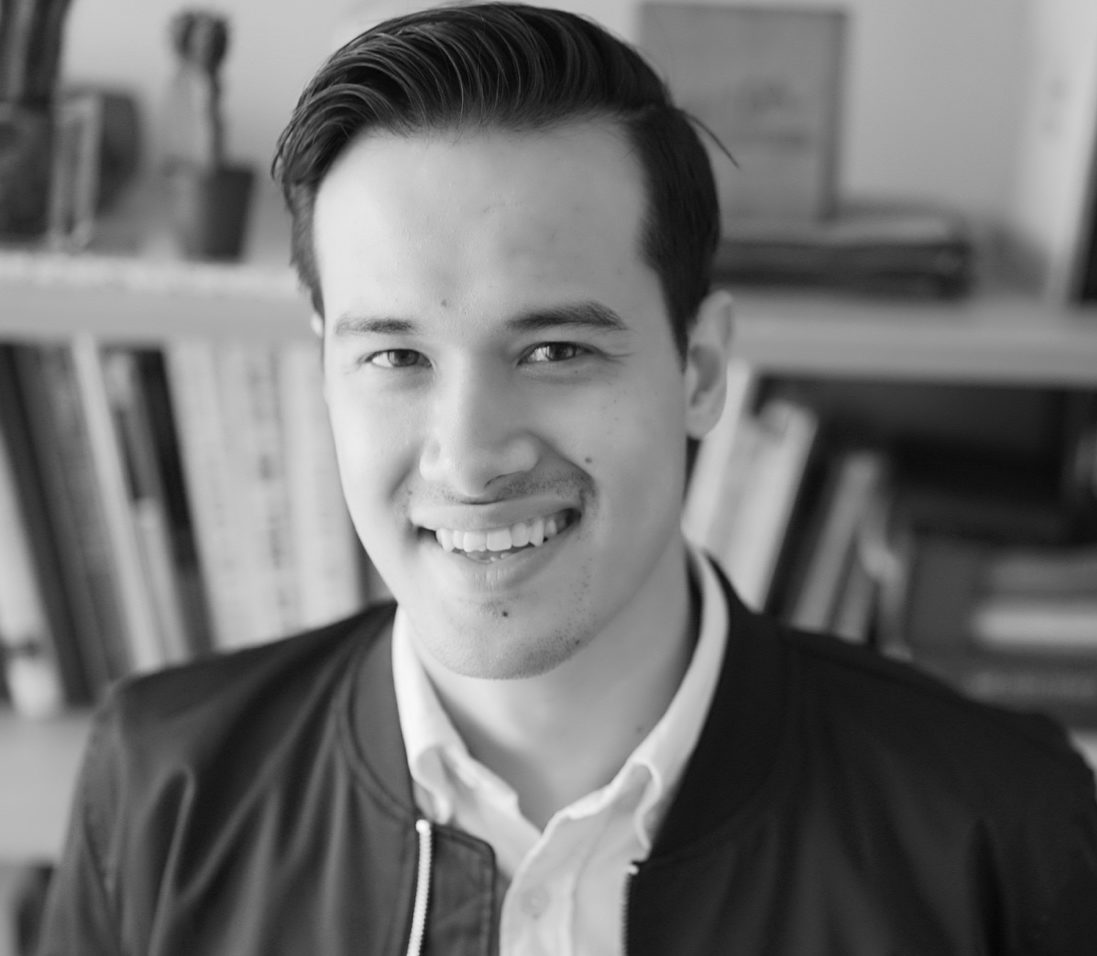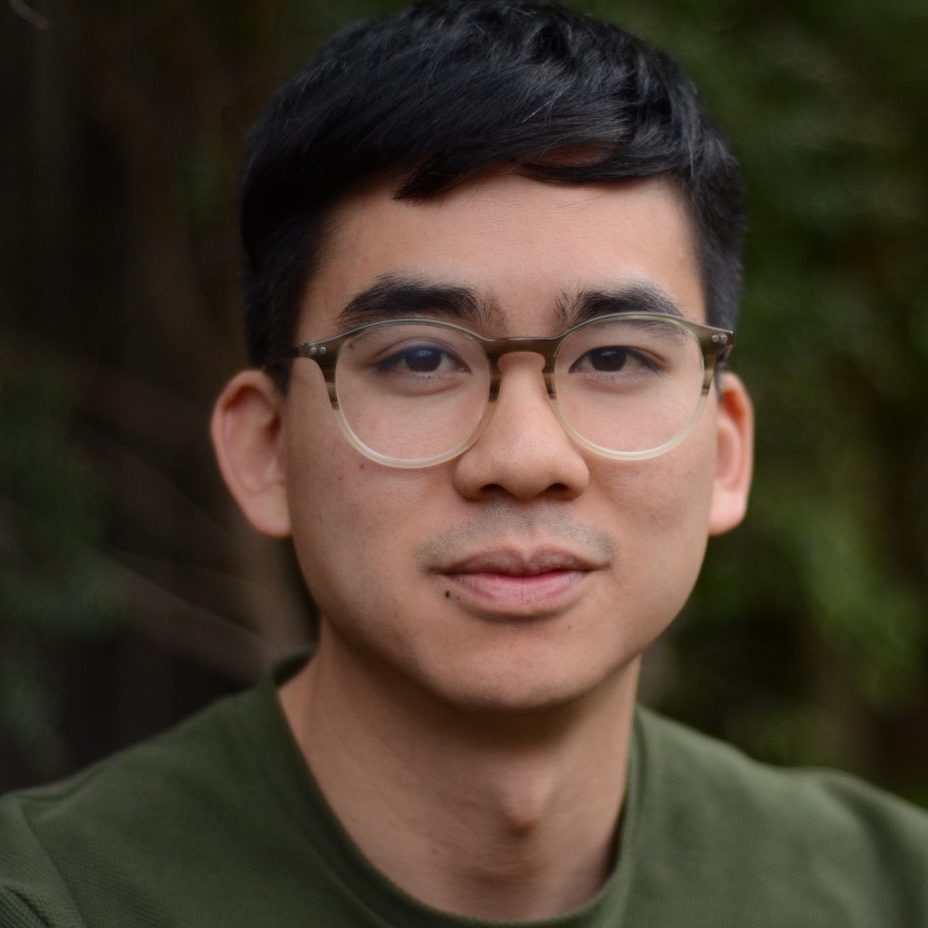You went to the Master Type and Media program in The Hague. What was your process, personally and professionally, in your decision to apply and attend?
I had been interested in typography since I was fifteen, and it stayed with me all through my undergraduate years. In my first job as a book designer, I really pushed myself to learn and practice more in this area. I became a bit of a nerd about typography -- identifying typefaces, but also, more importantly, understanding how different typefaces communicated different voices and how certain forms behaved when the letters were printed large and when they were printed small.
In 2012, I left my job to start a small graphic design studio with a focus on typography. A lot of our work involved making small edits to letterforms to make them work for logos and such, and I really felt that I would love to have some proper education and training for such work.
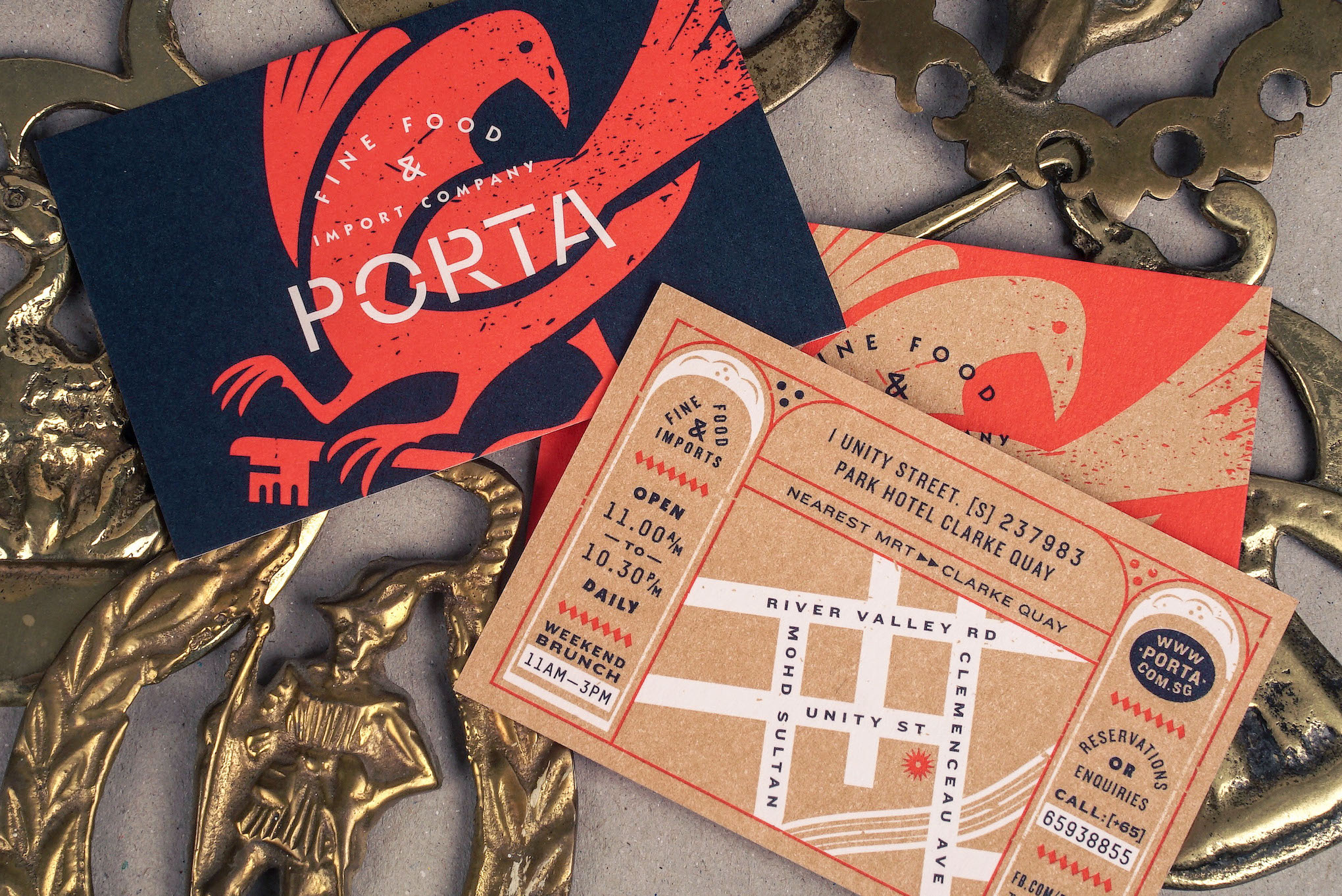
Store cards designed for Porta, a Park Hotel Group restaurant featuring Porta Stencil, a custom typeface.
I found out about the Type@Cooper Condensed Program and applied successfully for it in the summer of 2012. It was thrilling to really be learning type design with established professionals, such as Jean François Porchez, Stéphane Elbaz, Just van Rossum, and Hannes Famira. I have nothing but praise for this program; however, it became clear upon returning to Singapore that I had only scratched the surface. I had a functional knowledge of the software, but only a basic-to-intermediate understanding of the structures of letterforms, so making progress on the typeface I was working on was still very ponderous.
Until that point, I knew about the Type and Media program, but had not seriously considered applying. I wasn’t even aware of the open day in January, but sent off my application mid-February and crossed my fingers! When I received the email back from them, it was only then that I thought, “Crap, now I have to figure out how to make it work!” In the end, the studio took a 9-month hiatus and my wife and I did “long-distance” over the next year. It was tough emotionally, but we survived!
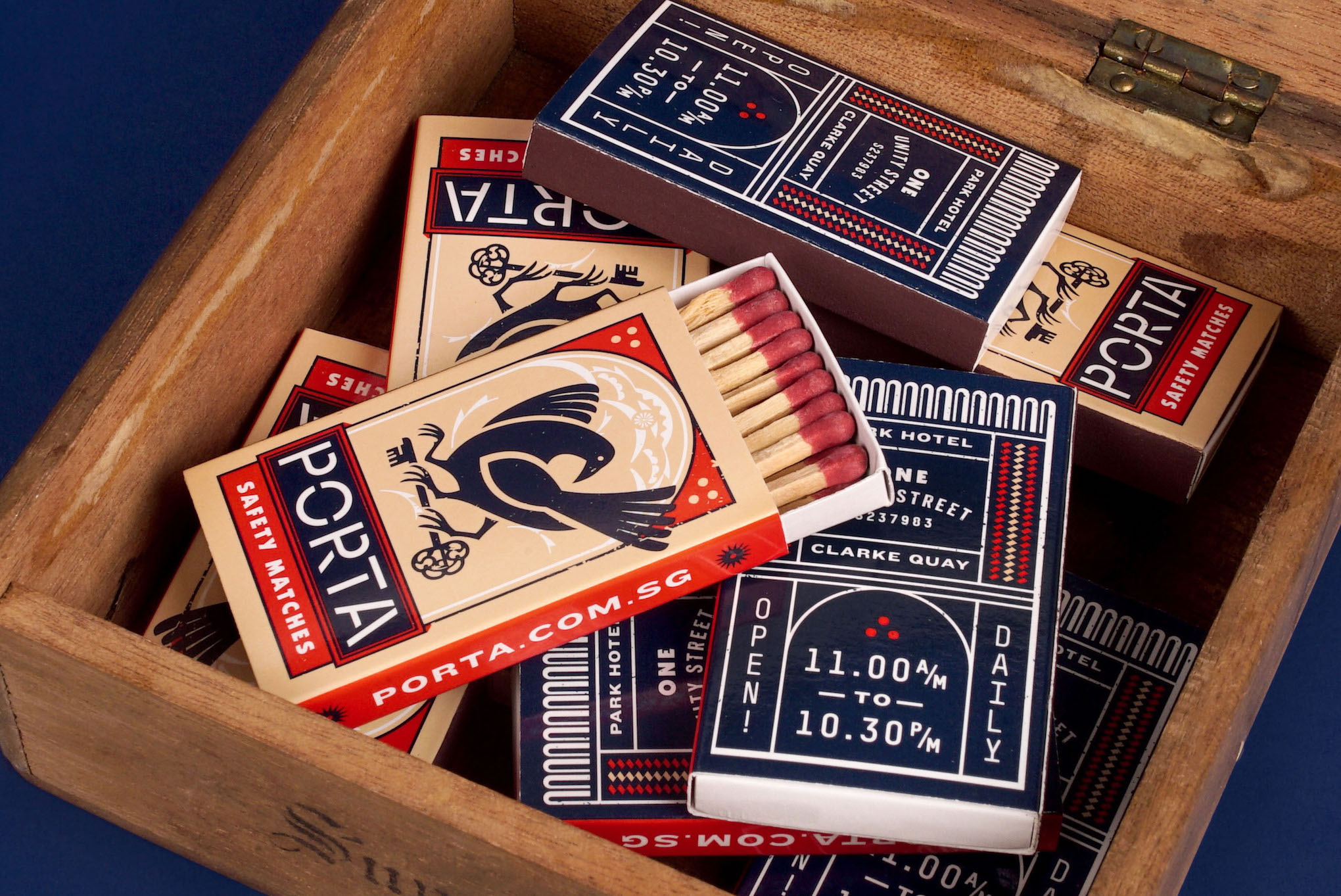
Matchboxes designed for the Porta project, featuring the Porta Stencil custom typeface.
Even though I’m half-Belgian, I grew up in Singapore, and had not lived in Europe for any extended period of time, so while the Netherlands will always hold a special place for me, in the beginning there was definitely some culture (and weather) shock.
The program, as perhaps many others have said, is intense. It’s an immense blessing to have the depth of knowledge of the faculty. Many, if not all, are “legends”…okay, very well regarded…in the type design field, and the course is very focused on sketching, coding, tool making, and drawing, which was great for me. I felt I was pushed to my limits in many instances.
My classmates were also ridiculous talented—Nina Stössinger, Mark Frömberg, James Edmondson, Slava, David Chmela, Alexandre Saumier Demers, and Hugo Marucco. It was pretty competitive, but in a good way. Overall, I have no regrets that I went, because it was a dream come true just to be there and the lessons I’ve learned have definitely changed the way I work.
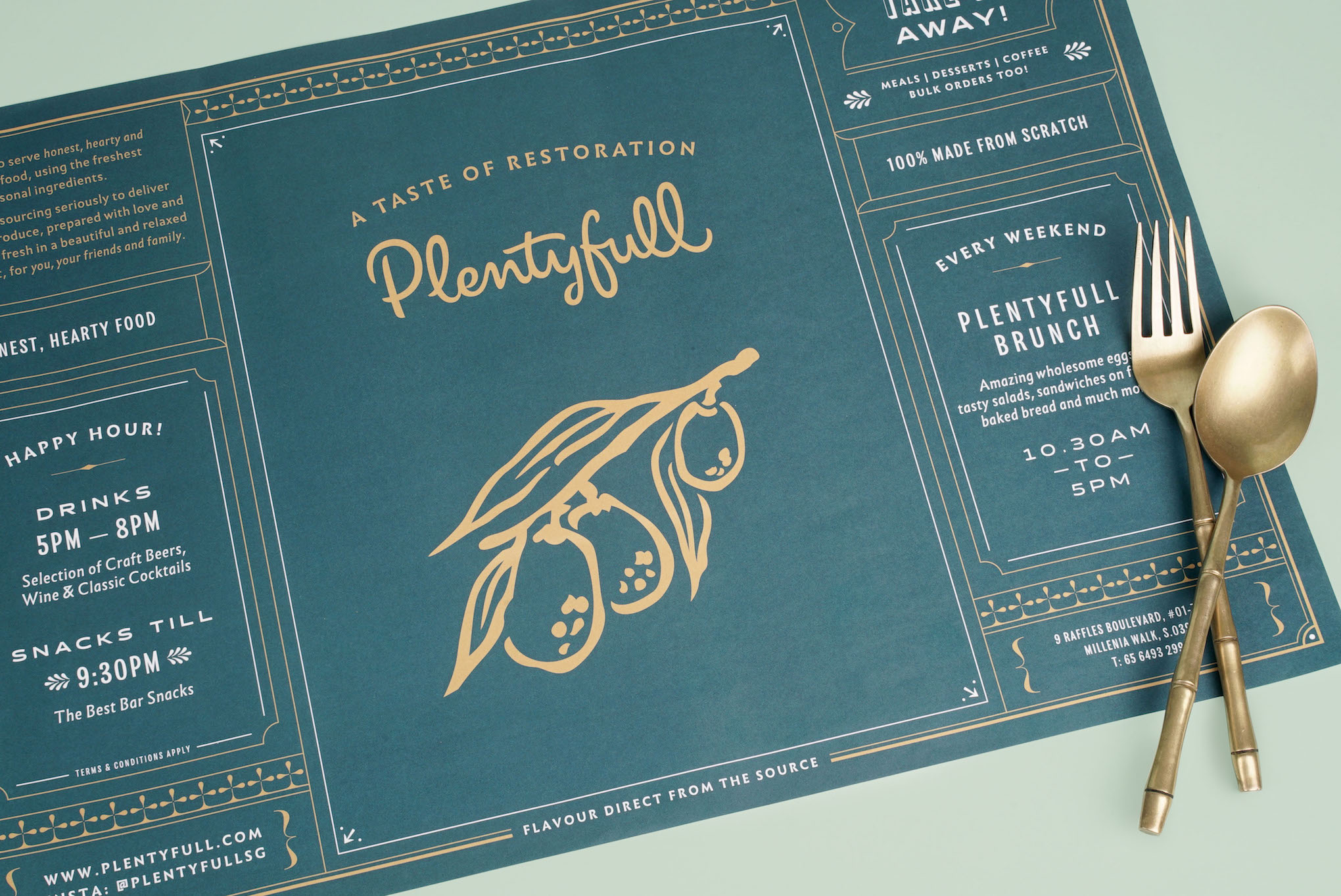
Placemats designed for Plentyfull, a restaurant, grocer, and patisserie, using Plentyfull Gothic, a custom typeface.
Can you paint a small picture for us of how design is regarded in Singapore? How does it compare to a place like the Netherlands, where it's very much a conscious part of everyday life?
Singapore is a young nation -- 53 years old this year -- so design as a profession and practice, give or take a few years, is roughly the same. Design is probably not on the same level as it is in the Netherlands in terms of being a “conscious” part of everyday life, but I feel positive about it. Awareness about design has risen a lot over the last decade.
We have the Singapore government championing design for business more than ever. Each of the five polytechnic schools in Singapore has some form of design program. As an industry, I believe we are growing, but it will take some more time for mere awareness to change mindsets and to finally to become a conscious part of everyday life.
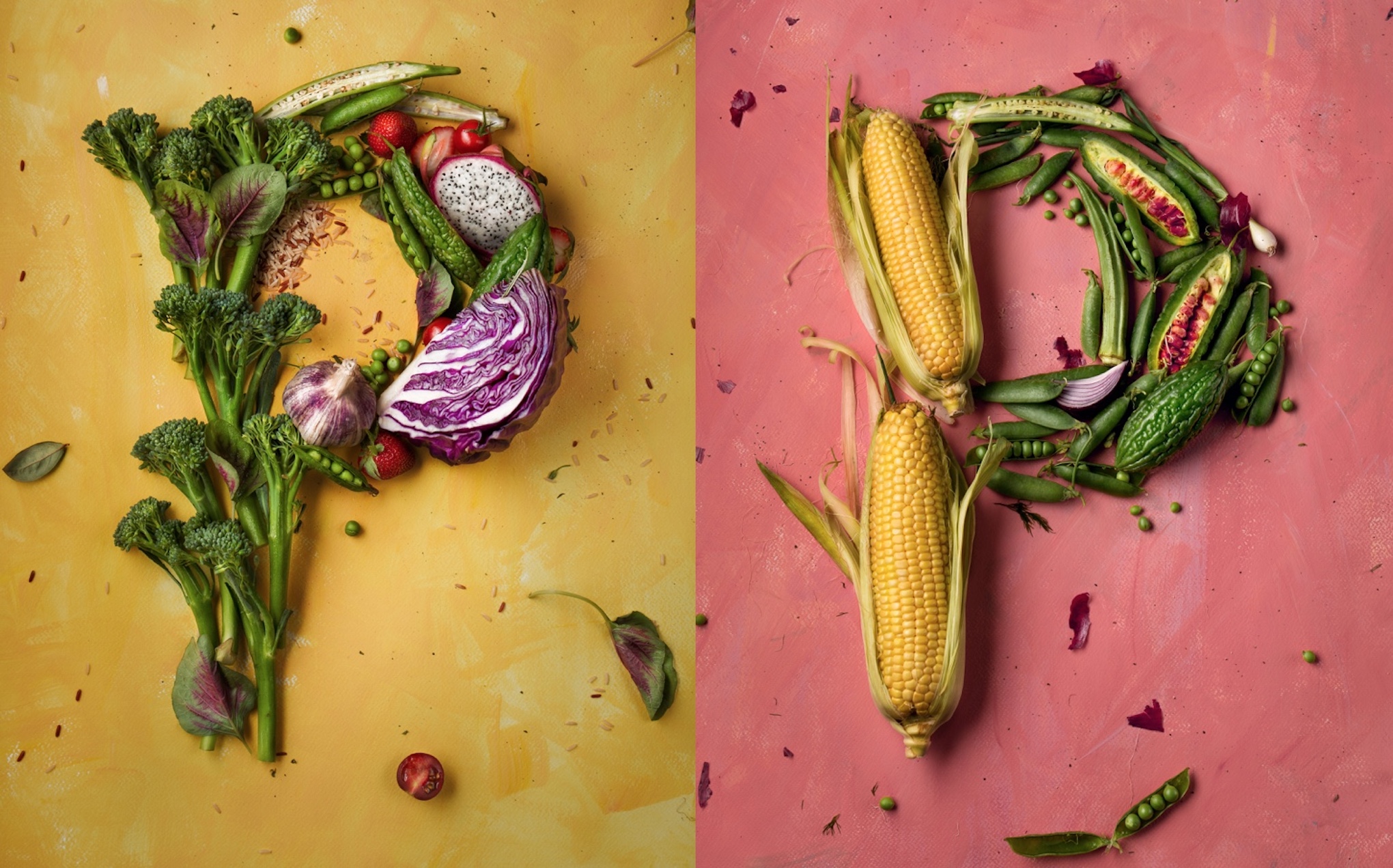
Letters created as part of the identity for Plentyfull, a project included in the Type Directors Club TDC63 traveling exhibition.
What type-based projects are you working on? How much of your time is spent on type versus other graphic design or art direction work?
Since returning to Singapore, most of the type-based projects I’ve been working on are custom type solutions for branding, which is still my main “job-scope”. I run a trans-disciplinary design practice called Parable, where type design is sometimes part of the solution that we propose. My day-to-day is still very much in the realm of graphic design, branding, signage, and I usually find myself working on my own projects in the evenings after we’ve put the kids to bed. Currently, I’m still working on my first release, a continuation of my graduation project, Morris. It should be released later this year…but at the moment, it feels like “so close, yet so far” (LOL).
For a period of time I also organized a quarterly series of typography talks called Letterlove. We've had the honour of hosting Christian Schwartz, James Edmondson, Jean François Porchez, Joe Chang, and Alexandre Saumier Demers in Singapore, and each spoke about type design and their individual practice. We've taken a break but are planning to start again soon.
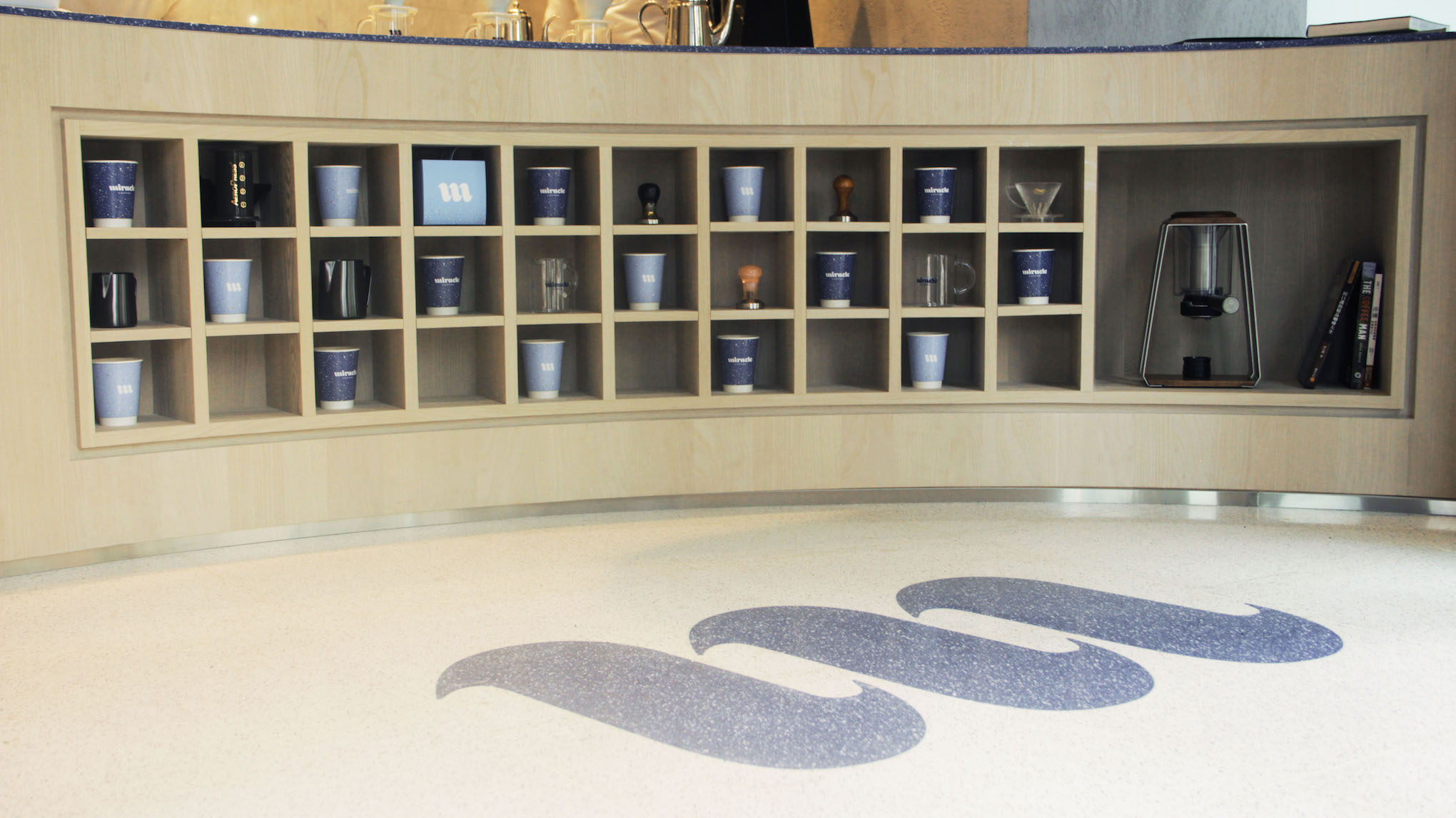
Branding and packaging for Miracle Coffee in Taipei’s Neihu District, including a logo in a terrazzo floor.
Another project very close to my heart is a type project tentatively titled Singapore Gothic. In 2015, I was asked to give a presentation at the Bangkok International Typography Symposium (BITS) and used the opportunity to showcase Singapore’s fast-disappearing vernacular sign painting.
Like everywhere in the world, painted shop signs are giving way to more modern (and far less charming) types of signs. But in Singapore and also in Malaysia there is a peculiar sort of industrial vernacular sans that crops up. It’s not pretty but it’s very, very functional. I’ve been collecting examples for a few years and the presentation gave me the impetus to try to preserve the spirit of these letterforms digitally.
Singapore’s 50th year of independence was also 2015, so it has taken three years to get to a point where it’s almost ready. I’m looking forward to seeing these two projects out this year.
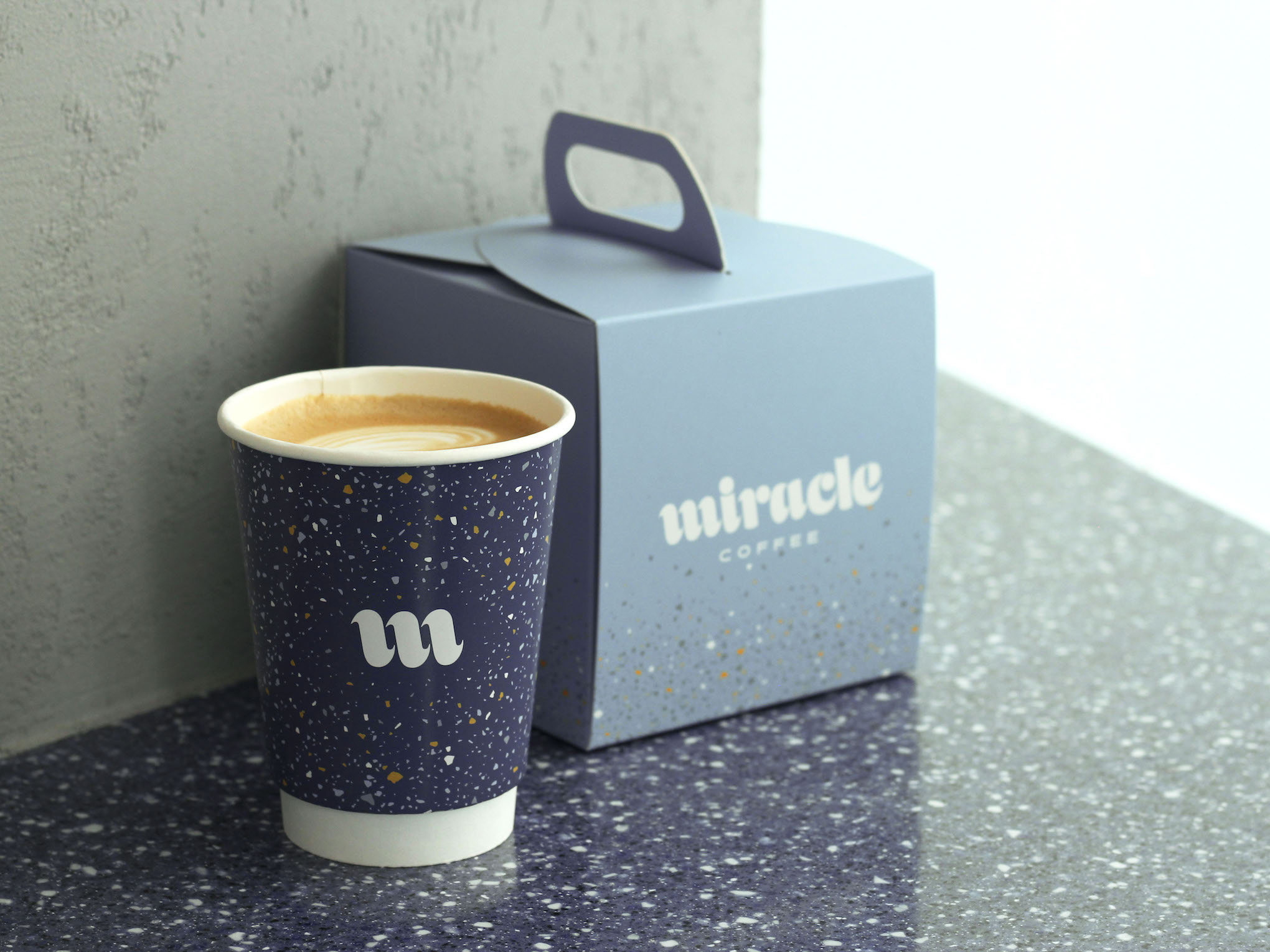
Coffee cup and boxes for Miracle Coffee.
